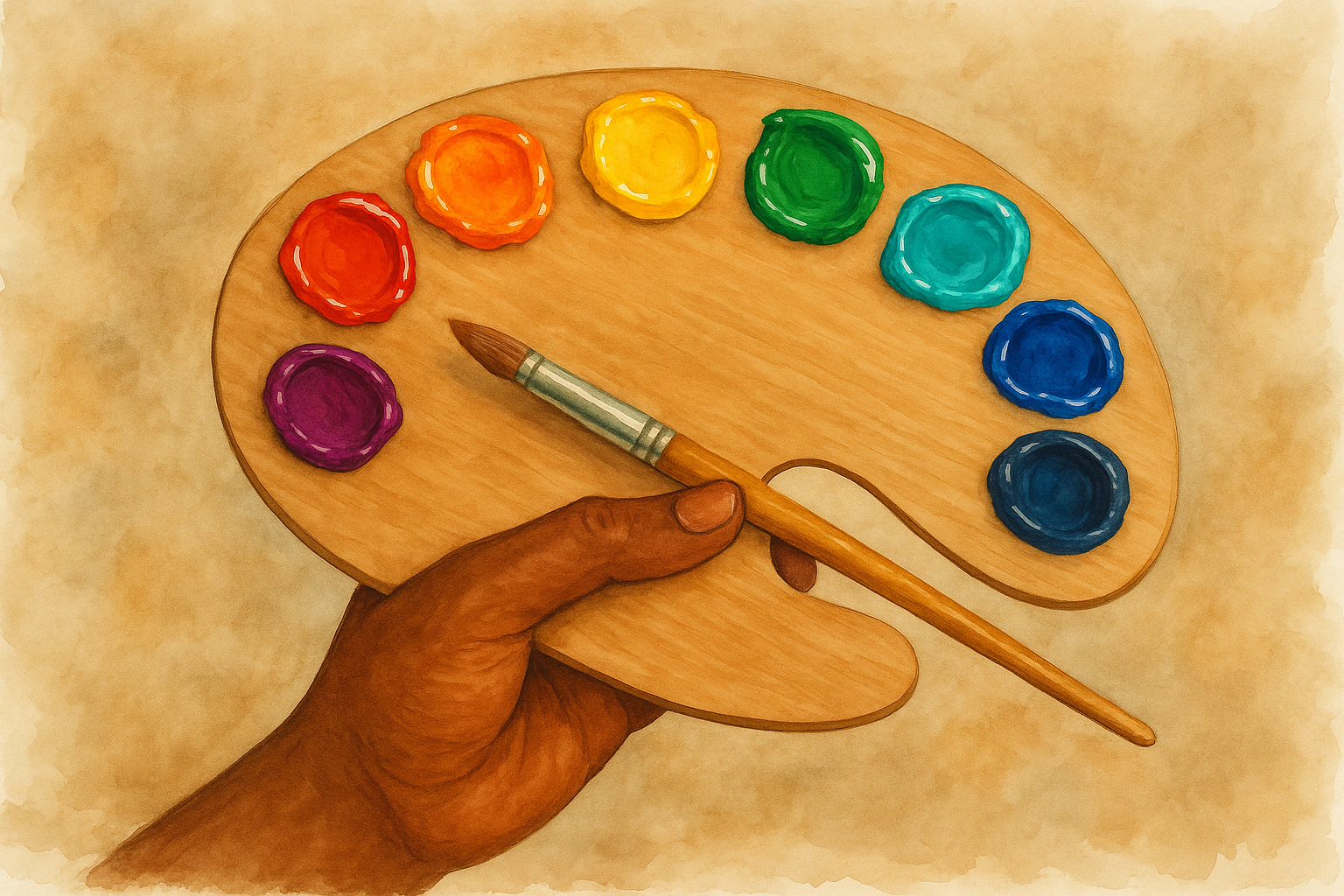Colour Theory for Creatives
Part 1: What Is Colour Theory, Anyway?
If you've ever picked up a paintbrush, opened a design app, or just spent time deciding on the perfect Instagram filter — you've already started thinking about colour theory. You just might not have thought of it that way.

Colour Is About More Than Just Hue
At first glance, colour seems simple. Blue is calm, red is bold, yellow is cheerful, right?
Well, yes. To an extent but, there’s a lot more going on behind the scenes. Colour theory is the framework that helps artists and designers make intentional choices about colour. It’s part science, part art, and part emotion.
In short, it’s how we take colour from accidental to intentional.
Why Should You Care?
Colour isn’t just a finishing touch. It can:
- Set a mood (soft pinks for calm, deep purples for mystery)
- Create contrast and hierarchy (helping the viewer know where to look)
- Tell a story (especially in illustration)
- Define a brand (just think of Coca-Cola red or Tiffany blue)
If your design or illustration feels ‘off’, there’s a good chance the issue lies with the colour choices.
The Brain Responds to Colour Instantly
Our brains process colour faster than words or shapes. That means colour often makes the first impression, before the viewer even realizes it.
Want to make your work more emotionally impactful or visually clear? Learning to control colour is key.
What We’ll Cover in This Series
Over the next four weeks, we’ll break colour theory down into friendly, bite-sized pieces:
1. The Colour Wheel – what it is and how to use it
2. Colour Harmonies – combos that just work
3. The Psychology of Colour – what colours mean
4. How to Build Colour Palettes – practical tools and pro tips
Takeaway: Start Noticing Colour
Before we get into the “rules,” start by simply paying attention:
- What colours are you drawn to?
- How do colours in your favourite artworks make you feel?
- Which colour combos do you keep seeing in ads, apps, or packaging?
Colour theory starts with observation. You’re already on your way.
There are many books on colour theory, available on Amazon. Here are a couple of useful examples (As an Amazon associate, I earn from qualifying purchases):
Up next: “Meet the Colour Wheel — Your New Creative Sidekick”. We’ll explore primary colours, mixing magic, and how designers organize the spectrum.
Until then...

Leave a Comment
I hope you enjoyed this post. If you would like to, please leave a comment below.